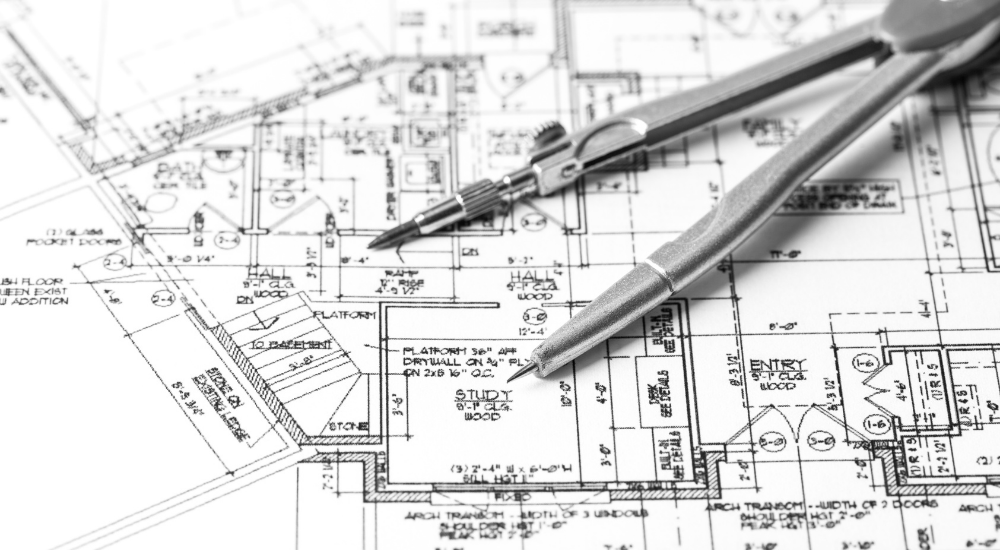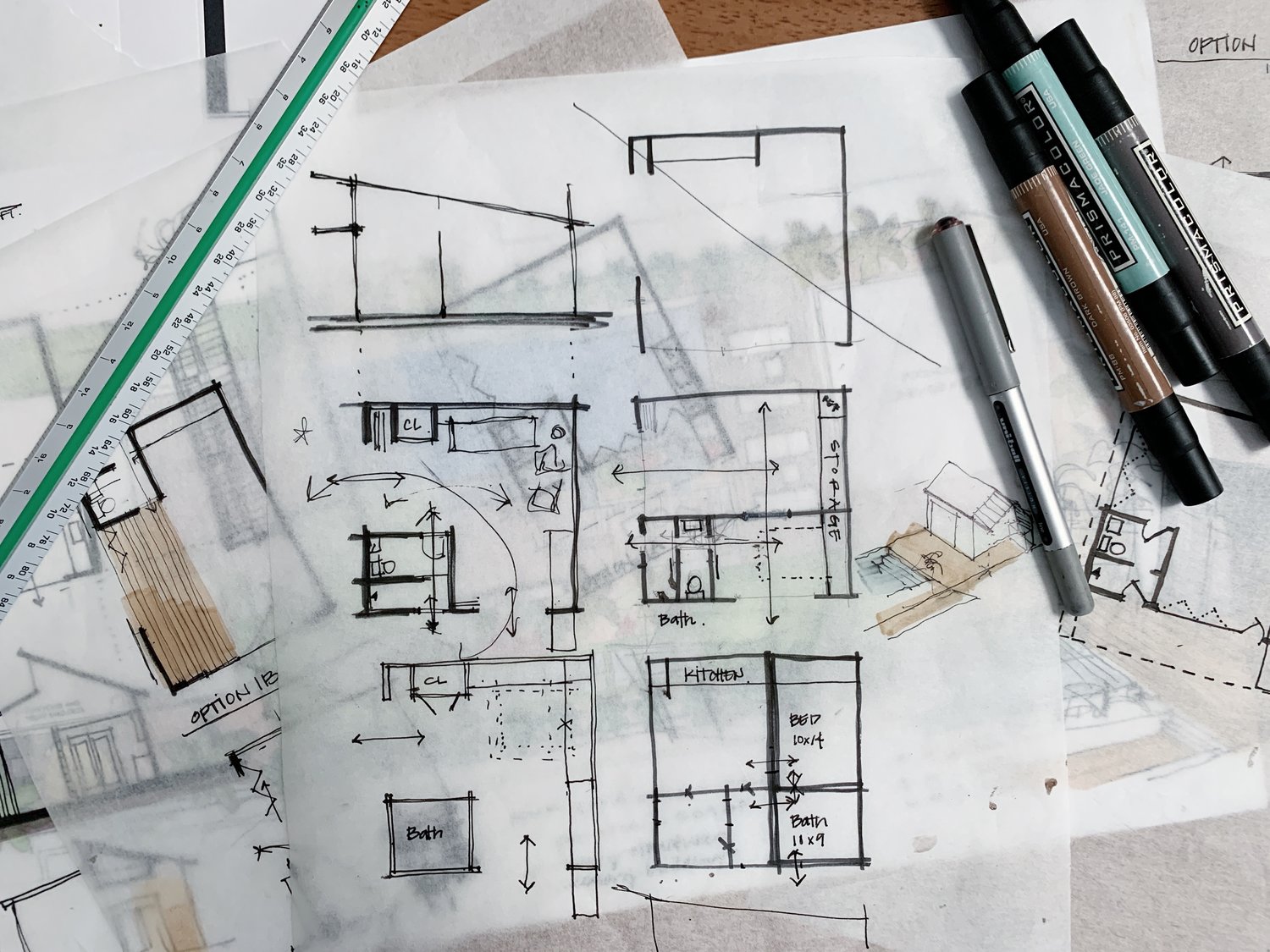Understanding the Diverse Job Paths Available for Aspiring Architect
As a hopeful Architect, you have a world of job paths waiting on you. Each path supplies unique difficulties and chances to use your imagination and technical knowledge. Whether you're drawn to standard design or the subtleties of lasting layout, there's a specific niche that straightens with your rate of interests. Understanding these varied choices can shape your expert journey, but which instructions will you choose to explore first?
Standard Style: Designing Structures and buildings
Standard design focuses on creating buildings and frameworks that mix functionality with aesthetic appeal. As you discover this area, you'll appreciate the elaborate balance in between form and function. You'll learn to attract ideas from historic styles, integrating aspects like symmetry, products, and workmanship. Your styles can reflect cultural heritage, showcasing regional customs while meeting modern needs.
You'll create skills in drafting, model-making, and site evaluation, allowing you to picture and communicate your ideas efficiently. Engaging with clients, you'll require to recognize their vision and convert it right into feasible layouts.
Moreover, developing codes and sustainability methods are vital in your job, guaranteeing your structures are safe and eco-friendly. As you grow in your career, you'll discover chances in residential, industrial, or even restoration jobs, each offering unique obstacles. Welcoming typical architecture leads the way for a satisfying occupation that pays homage to the past while shaping the future.
Urban Planning: Forming Areas and Public Spaces
As a hopeful Architect, you can play an essential function as a metropolitan coordinator, transforming just how neighborhoods engage and operate. By utilizing area interaction techniques, you'll guarantee that residents have a voice fit their environment. Plus, incorporating lasting layout principles will assist create rooms that not only meet today's demands but additionally protect the future.
Duty of Urban Planners
While many could think about architects as the single dreamers behind structures, city organizers play an essential function fit the broader landscape of neighborhoods and public rooms. They analyze land usage, zoning legislations, and neighborhood needs to create lasting settings that improve top quality of life. By collaborating with different stakeholders, you'll help make parks, transport systems, and houses that advertise social communication and ease of access. Urban organizers likewise concentrate on environmental factors to consider, making certain that developments integrate environment-friendly spaces and assistance biodiversity. Your competence in spatial layout and community characteristics enables you to visualize future growth while maintaining social heritage. In this crucial function, you'll straight influence just how people experience their environments, making every project an opportunity for positive change.
Community Interaction Techniques
Effective area involvement techniques are crucial for metropolitan coordinators to ensure that the voices of citizens are heard and valued in the preparation procedure. To cultivate purposeful discussion, you must focus on open online forums and workshops where area participants can express their ideas and worries. Usage studies and social media to reach a more comprehensive audience, making sure varied perspectives are included. Working together with local companies can improve trust and facilitate deeper links. It is necessary to supply clear info concerning decision-making procedures and suggested jobs, allowing locals to really feel informed and empowered. By proactively paying attention and including responses, you'll create areas that show the community's demands, inevitably leading to even more lasting and effective city environments. Embrace openness and continuous discussion for lasting influence.
Sustainable Style Concepts
When designing metropolitan areas, incorporating lasting design principles is vital for producing environments that prosper both environmentally and socially. Consider integrating environment-friendly spaces, like parks and gardens, to improve biodiversity and enhance air quality.
Designing with water preservation in mind is likewise essential-- consider rainfall yards and permeable surface areas to handle stormwater. Entailing area members during the planning procedure assurances that the spaces you create meet their requirements and motivate social communication. By accepting these principles, you'll contribute to lively, lasting city landscapes that benefit everybody.

Landscape Design: Developing Lasting Outdoor Environments
As you explore landscape architecture, you'll uncover crucial layout principles that produce attractive and useful exterior areas. Sustainable practices play a vital duty in guaranteeing these environments flourish while decreasing ecological influence. And also, you'll find a range of occupation opportunities that allow you to make an actual distinction in just how people interact with nature.
Design Principles in Landscape
Recognizing design concepts in landscape style is necessary for producing sustainable outdoor settings that balance with nature. You'll need to contemplate aspects like percentage, balance, and scale to assure your styles really feel natural and welcoming. Additionally, pay interest to seasonal adjustments, designing with materials that complement the surroundings year-round.
Sustainable Practices Introduction
Lasting methods in landscape style not only focus on visual appeals yet additionally prioritize eco-friendly health and resource preservation. You can design areas that advertise dirt health and wellness, such as using natural materials and exercising permaculture principles. Eventually, these practices guarantee your styles benefit both people and the setting for years to come.
Occupation Opportunities Exploration
With a solid foundation in lasting methods, landscape style provides a variety of occupation courses that permit you check over here to make a purposeful effect on the environment. You could function as a landscape designer, producing visually pleasing and functional exterior rooms, or specialize in eco-friendly reconstruction, aiding to restore broken ecosystems. Urban organizers often collaborate with landscape engineers to develop eco-friendly spaces in city setups, improving city livability. If you're enthusiastic about education and learning, take into consideration ending up being a landscape architecture instructor, inspiring future generations. Furthermore, you might deal with nonprofits concentrated on environmental sustainability or participate in research study to introduce brand-new practices. Each path not only shapes gorgeous settings yet likewise cultivates a much healthier planet for future generations.
Sustainable Style: Focusing on Eco-Friendly Practices
As you explore your job in architecture, accepting environment-friendly practices can set you apart in an affordable field. Lasting layout concentrates on developing buildings that reduce ecological impact while boosting owner health. By integrating eco-friendly products, energy-efficient systems, and lasting structure techniques, you'll contribute to a greener future.
Start by acquiring understanding of environment-friendly accreditations like LEED or BREEAM, which can strengthen your credentials. Consider how natural light, ventilation, and thermal performance can enhance style. Work together with engineers and environmental professionals to introduce solutions that Recommended Site lower waste and conserve sources.
Do not fail to remember the significance of neighborhood involvement-- engaging local stakeholders can motivate layouts that balance with the environment. As customers increasingly focus on sustainability, your proficiency in eco-friendly methods will not just draw in jobs yet likewise accomplish your interest for liable design. Welcome this vital aspect of the career, and enjoy your profession prosper.
Historical Preservation: Protecting and Restoring Social Heritage
While you begin on your architectural journey, think about the essential function of historic conservation in keeping our social heritage. This field concentrates on the security and remediation of considerable structures, sites, and frameworks that tell the stories of our past. By engaging in historical conservation, you'll assist protect the architectural heritage that shapes neighborhood identification.
As a historic preservation Architect, you'll evaluate historical relevance and examine the condition of structures. You'll work carefully with preservationists and chroniclers to ensure authentic remediation techniques are used. This profession path permits you to mix creative thinking with research, allowing you to develop solutions that respect initial products and craftsmanship.
Your job not only adds to sustainability by reusing existing structures but likewise fosters a feeling of satisfaction within areas. Accepting this course will certainly aid you come to be a guardian of background, protecting the stories and aesthetics that enrich our lives.
Interior Design: Enhancing Indoor Spaces
Historic conservation and indoor design both share a dedication to boosting the developed atmosphere, however they focus on various facets. While historical conservation stresses keeping a structure's historical and social value, indoor style nos in on optimizing interior areas for capability and appearances.
As an ambitious Architect, you'll discover that indoor architecture allows you to blend creative thinking with technological skills. You'll create rooms that not only look great but also promote convenience and effectiveness. This field includes recognizing exactly how light, shade, and materials engage within a room, affecting mood and functionality.
You'll function on various jobs, from residential homes to commercial workplaces, ensuring that each environment satisfies the demands of its owners. By focusing on customer experience, you can transform insides right into motivating and practical spaces, making a substantial effect on exactly how individuals interact with their surroundings. Embrace the possibility to boost indoor environments and shape the means individuals work and live.
Industrial Layout: Combining Performance With Visual Appeals
Commercial layout plays a crucial duty in producing products that seamlessly mix aesthetics with functionality, making certain that what you utilize daily is not just visually appealing yet likewise practical. As an ambitious Architect, you could involve yourself in this area, concentrating on making whatever from furniture to customer electronics. Your job involves recognizing individual demands, materials, and making processes, permitting you to develop innovative remedies that improve day-to-day experiences.
In industrial style, you'll commonly team up with producers, online marketers, and designers, making certain that your layouts are not just attractive yet additionally viable. This job course provides a dynamic atmosphere where imagination satisfies usefulness, making it a fulfilling selection for engineers interested in forming the products of tomorrow.
Often Asked Concerns
What Educational Accreditations Do I Required to Come To Be an Architect?
To become an architect, you'll need a professional degree in architecture, generally a Bachelor's or Master's. Additionally, you'll need to complete a teaching fellowship and pass the Architect Registration Assessment to exercise legally.
Are There Qualification Demands for Different Architectural Career Paths?
Yes, there're qualification demands for various building courses. Architect. You'll require to pass exams, full teaching fellowships, and occasionally pursue specialized training, relying on your chosen emphasis, like landscape architecture, metropolitan design, or historic preservation
What Software Program Skills Are Crucial for Designers Today?

Just How Can I Gain Practical Experience While Examining Architecture?
You can obtain useful experience by interning at architectural companies, participating in layout competitions, offering for neighborhood tasks, or working together with classmates on real-world jobs. These chances enhance your abilities and develop beneficial connections in the sector.
What Work Opportunities Exist Outside Traditional Style Firms?
You can check out numerous task opportunities outside traditional style firms, like metropolitan preparation, interior layout, landscape architecture, building and construction management, actual estate advancement, or also roles in sustainability consulting. Each offers one-of-a-kind challenges and benefits.
Whether you're attracted to traditional design or the subtleties of lasting design, there's a specific niche that straightens with your interests.When creating city spaces, integrating lasting design concepts is essential for developing environments that flourish both environmentally and socially.As you explore landscape design, you'll discover necessary design principles that develop attractive and practical exterior spaces.Comprehending layout principles in landscape design is crucial for creating lasting exterior settings that harmonize with nature.In commercial layout, you'll typically team up with online marketers, producers, and designers, making sure that your layouts are not just beautiful however likewise practical.